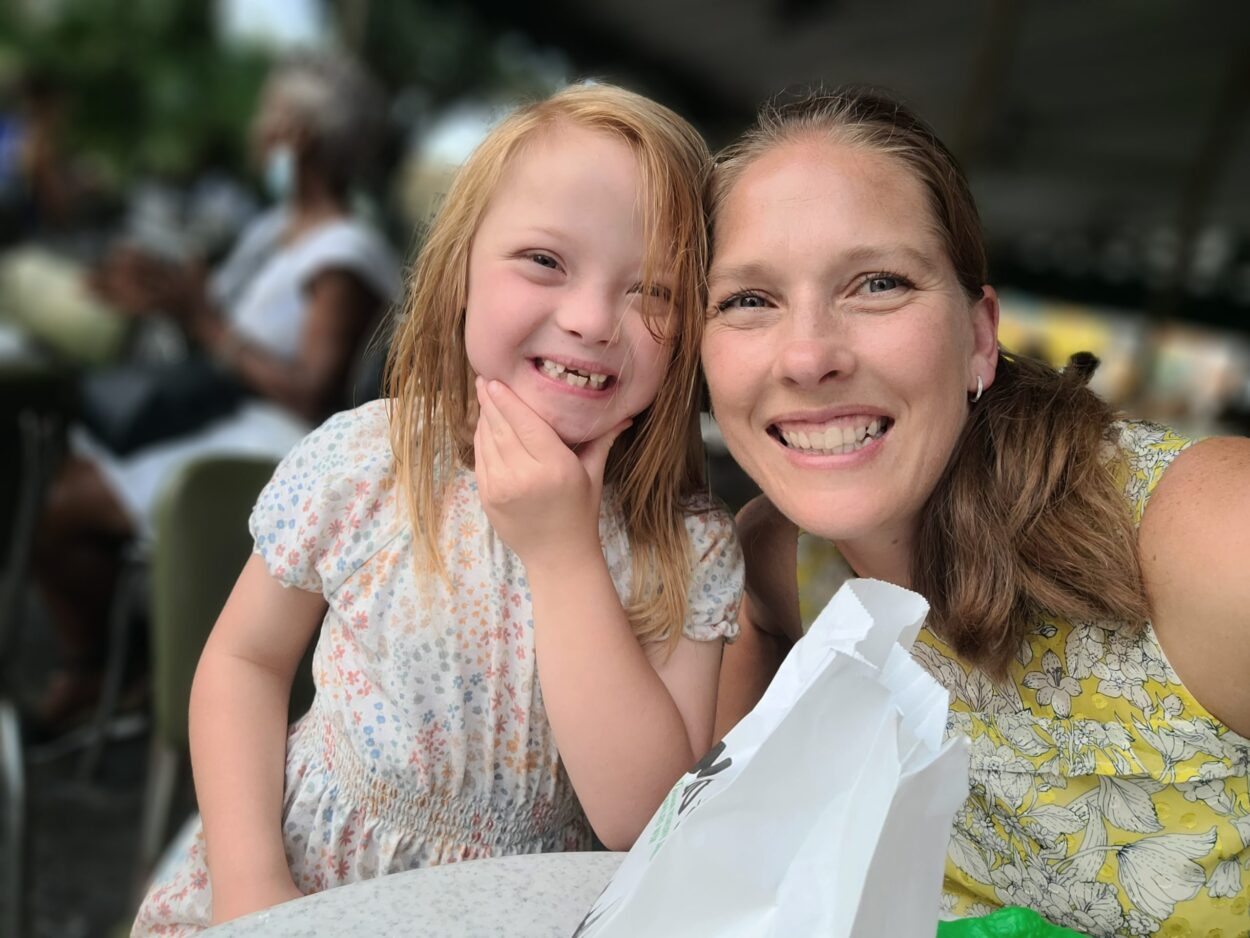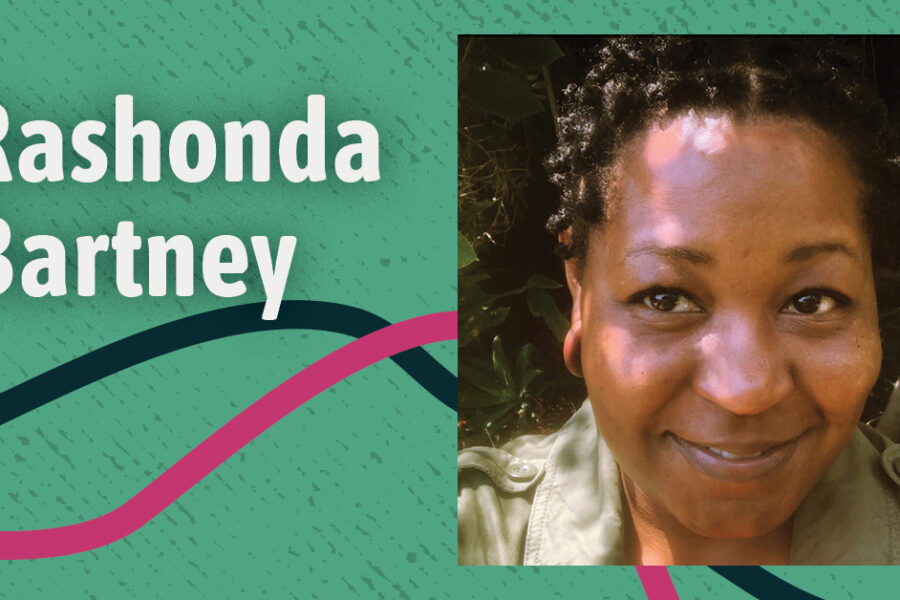When Nicole White’s daughter, Kate, was born and diagnosed with Down Syndrome, the first thing she did was look at the current research. “I found it received less funding than comparable things like Cystic Fibrosis and Autism,” says White. “It’s one of the lower funded areas of genomic diagnosis. I wondered ‘Is there a reason for that?’” This inspired White’s studies at Antioch, where she recently earned her PhD at the Graduate School of Leadership and Change and published her dissertation Caregivers and Healthcare Providers on Resources, Gaps in Care, and the Value of Down Syndrome Centers, which will be fully available next year. As she says, “I got to put my heart into it.”
For years, White has been privately dealing with the flaws in the existing systems of Down Syndrome care. One of the biggest issues is the profit based nature of health care. White wanted to know if there was a difference in care when people with Down Syndrome had access to clinics that were centered on their unique needs. It may not be surprising that White found both healthcare providers and at-home caregivers felt more equipped to give support when they had specialized resources. The questions that came next were why these resources aren’t widely available, who has access to them, and the measurable extent of their impact.
White’s varied education in biology and business administration set her up perfectly to explore these nuances. Her dissertation draws from these, and its conclusions are intended to be useful tools for other people who are navigating complicated and confusing healthcare systems.. “I felt a lot of parents weren’t able to think about it in the way I was thinking about it,” says White, “I want to make these processes easier for caregivers, so they don’t have to go through what I did.”
From ‘Military Brat’ to Research Administration
White’s dad was in the Navy, and she describes herself as a ‘military brat’. The family crisscrossed the country from Olympia, Washington, to Hawaii, to Columbus, Ohio, then finally to Southern Georgia. Similar to her childhood moves, White’s education was varied. As White says, “My education pathway wasn’t straight by any means.” She went to The Evergreen State College back in Olympia, her place of birth, where she earned a Bachelors of Science in Molecular Biology. “It was a total culture shock,” says White. The radical interdisciplinary spirit of Evergreen, where you create your own courses, was a staggering contrast to her recent life in Georgia—but then she had to find a job.
“I originally thought I was going to become a cancer biologist and cure ovarian cancer,” says White, but life took a turn. She met her husband in Ohio, and had two kids. She realized it wasn’t possible to balance the lab work she was accustomed to with a family, but she still loved science.
White realized there was a way she could hybridize science and business together, though. In 2008 she pursued this realization with a Masters in Business Administration from Ashland University. With the MBA she was able to move into research administration. This is the field where White currently works—as Director of Operations: Research Shared Facilities at the vast Cincinnati Children’s Hospital Medical Center. This role allows her to bring her many fields of experience together. But when her fourth child, Kate, was born and diagnosed with Down-Syndrome at birth, she started another new chapter.
Discovering the Gaps
“One of the first things I did was look up how much research there was on Down Syndrome,” says White. She quickly discovered that the science was both poorly funded and lacking. This was strange, because scientists have been aware of Down Syndrome in some form since the late 1800’s. “People knew about it,” says White. “People with Down Syndrome have been part of society for a long time.”
So why is it neglected? One example of how care for people with Down syndrome has been shaped is how heart defects are treated.Heart defects affect fifty percent of people with Down Syndrome. But heart surgery technology wasn’t developed until the late 70’s—this, as White explains, “Is how it’s socially evolved so that research isn’t as pronounced for people with Down Syndrome.”
The syndrome’s health risks couldn’t be treated, so the processes of care were neglected. Consequently, many of the other comorbidities of Down syndrome went unrecognized or transformed into stigma. Things are moving in the right direction, but much of the research is relatively young, and there are still gaps in care. “It’s going to take a lot more advocacy and awareness,” says White. “After Kate was born, I decided I’ve got to do this PhD.”
White focused her work around the institutions she had been struggling with. She started her dissertation by looking at the facilitation of care through Down Syndrome clinics. Through her research, she found that people that took their child to both a primary care provider, such as a family doctor, and a Down Syndrome clinic, had the highest satisfaction with their care. The “gap” in this case was financial; who can afford the hospital? Who can afford the clinic?
There were also gaps for the providers themselves—the hospitals, clinics and other organizations. “Resources were the biggest thing,” says White. “Both providers and caregivers have said that they don’t feel like there are enough resources to educate them about Down Syndrome.” Interestingly, she discovered that there is a significant lack of educational material about Down syndrome translated into Arabic and Spanish.
There’s also a dearth of support services, such as community activities and childcare. Many gaps—not unexpectedly—have to do with social inequity. Says White, “It was basically a pukefest of data.” After finding these gaps White is now looking at what to do with all of the information. Both how to package it and to present it to the people who can change these systems. “There’s a lot to be done,” says White, “I’m not sure where I’m going to land, but I’m jumping anyway.”
Antioch Provides Many Paths of Inquiry
White gathered so much information during her research it could have overwhelmed her. “There were times it felt like I could have done four dissertations,” says White. But she found a way to narrow it down. This wasn’t easy work, but the Graduate School of Leadership and Change faculty, fellow students, and especially her advisor Beth Mabry were extremely supportive. “They helped hold me accountable,” says White, “That’s why I chose Antioch. I didn’t want to do one of those online PhDs. I wanted to make sure I had some level of residency.”
The relative freedom of the curriculum also helped her tailor her research and learning for the project that was inspired by her daughter, but became an avenue for helping many people with Down’s Syndrome and their caregivers. “It allowed me to explore and to really understand what I was doing. It created a lot of intrinsic motivation for me,” as White says, “I essentially got to create my program.” White’s full dissertation was initially published on April 1st, her daughter’s birthday.
Springing from this work, there are several lines of inquiry that White would like to pursue. She wants to look at how hospitals can support Down Syndrome clinics as “non-revenue generating” — as a balance sheet. She’s also interested in developing more inclusive practices around daycare centers to support children with disabilities better. She’s already been awarded a small grant for this work. Additionally, she’d like to expand her findings, as she says, “I want to be mindful that these needs do not revolve around Down syndrome. A lot of the gaps are common to other diagnoses.”
A summer spent climbing Mount Katahdin, in Maine reminds her of how it felt to finish school. As she says, “It was very much like doing my dissertation. It was easy to go up and get to the top. But then you’re coming down off that high, and you’re asking ‘Where am I going? Where do I put my foot?’” Although there are many paths forward, armed with a trove of data, and the ability to work within businesses and research institutions, White’s work lights a new trajectory for institutions of care.




